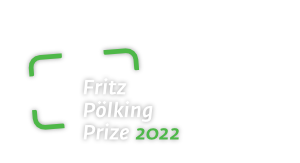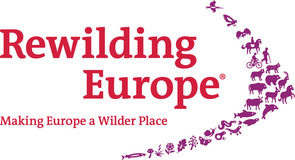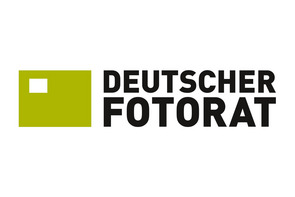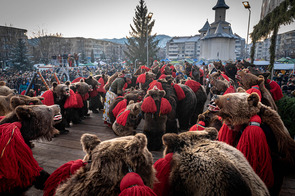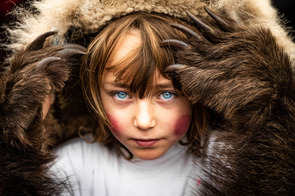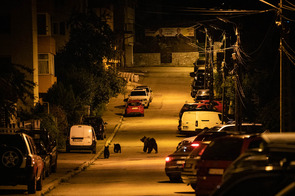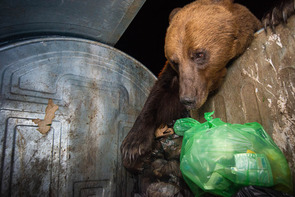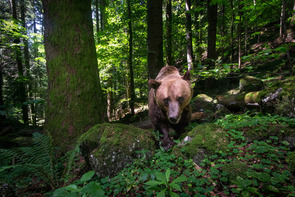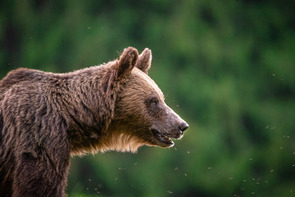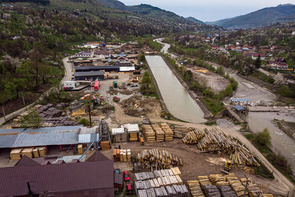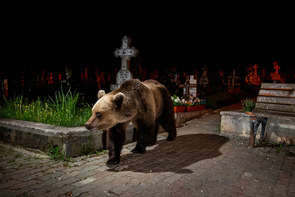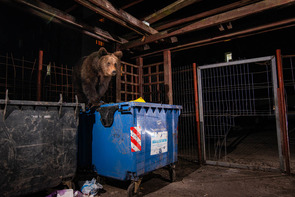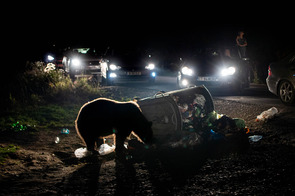Winner: David Hup and Michiel van Noppen - Netherlands
David Hup (*1995) is a documentary photographer who is fascinated by the relationship between people and nature.Growing up in a densely populated neighborhood of Amsterdam, he experienced our relationship with nature in human-dominated areas first hand.He investigates how we interact with nature and how our actions can harm or benefit ecosystems. David uses photography to raise awareness of our impact on nature, with the aim of creating a sustainable basis for coexistence.
Michiel (*1997) is a young photographer who specialises in subjects related to ecology, conservation and natural history.Through his studies in biology, he has a deep understanding of the scientific world and the wonders that nature produces. With one foot in academia and the other in the field, he hopes his photos provide a link between the two and give a voice to scientists, conservationists and local communities to better protect the ever-dwindling yet immensely important natural world.
www.michielvannoppenphotography.com
www.davidhup.com
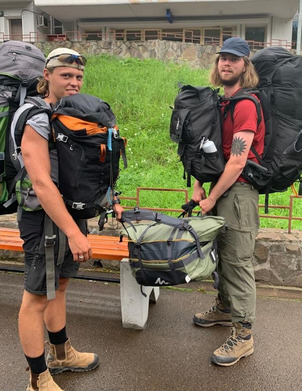
Project: A bear in the backyard
A story about the deep-rooted connection between Europe's last remaining wilderness and a young democracy of the name Romania.
This story is the work of two young Dutchmen joined by their love for Romania, who have travelled back and forth for four years between work and university in order to document one of the last places on this overpopulated continent that has still true wilderness to offer. With this photo story, they aim to document a beautiful but often overlooked part of Europe and one of the many challenges it faces.
In villages that lie in the shadows of the Carpathian Mountains, the presence of bears is clearly felt. Due to illegal logging of the old-growth forests, their habitat and food becomes increasingly scarce. In search of food, they have to migrate from the ancient forests down to the villages, which regularly leads to conflicts with the inhabitants.
However, in several towns around Transylvania bears are being worshipped every winter by the traditional Ursul dance. A dance to fertilize and cleanse the earth, chase away evil spirits, and welcome the new year.
The exceptionally dense bear population in Romania is a result of the communist era, when Nicolae Ceausescu was in power and banned bear hunting –a ban from which only he and his guests were exempt. As a result, Romania now has around 6000 bears, which is half of the European population. The problems of coexistence of bears and humans have now become a priority on the political agenda, but the debate on the right course of action is very complex due to the many parties involved. And while discussions continue, conflicts keep arising: Shepherds lose sleep trying to protect their sheep, and bears continue to break through fences to feast on scraps.
We dedicate this story to Goia Natalia,our beloved ‘Romanian mother’, who sadly passed away 16 June 2022.
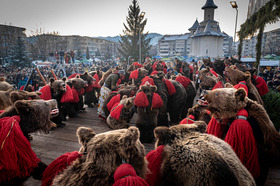
Bear dance
At the traditional Ursuldance in Comănești on the north-eastern slopes of the Carpathians, people dance in bear skins trimmed with bushy, bright red shoulder tassels. This ritual is performed in many towns and villages in the region during the last days of December to fertilise and cleanse the earth, drive away evil spirits and welcome the New Year.
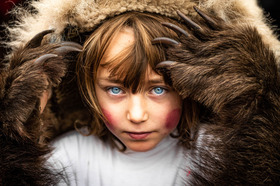
Paws for thought
Even small children, like this blue-eyed girl in Onești, join in the Ursul dance, despite the weight of the costume, which can weigh up to 50 kg. The people of Onești also have to contend with the presence of bears in their town.
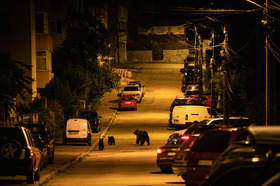
Nosy neighbours
A bear mother leads her cups through a town in Transylvania The urban residents have become accustomed to situations like this, which can be dangerous for humans and animals. Bear attacks on humans, usually involving hunters, gamekeepers or shepherds, are on the rise, and bears are repeatedly injured or killed in road traffic.
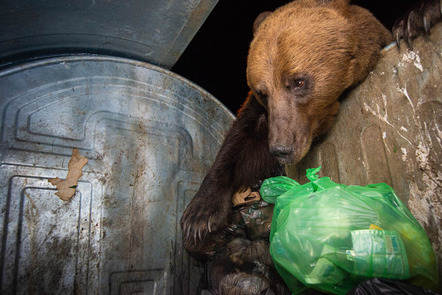
Grabbing garbage
This mother bear has just tipped over a bin in the hope of finding a late-night snack for her cubs. When night falls and the streets become quiet, bears turn up and search for food.
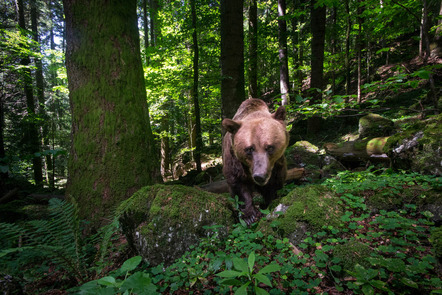
In her natural habitat
This picture of a large female bear in a Romanian forest was taken using a camera trap. In the wild, omnivorous brown bears adapttheir eating habits according to the seasons: they eat insects, reptiles and mammals as well as grass and new shoots in spring, berries in summer followed by fruits and nuts in autumn to build up a sufficiently thick layer of fat before hibernation.
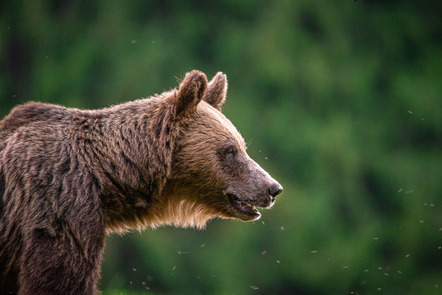
Bear portrait
During the almost 25-year dictatorship of Nicolae Ceaușescu, Romania's bear population nearly doubled, to an estimated 7500 animals when he was deposed in 1989. Forests were managed in a bear-friendly way and additional food was provided for the animals. Only the despot and his guests were allowed to hunt bears.
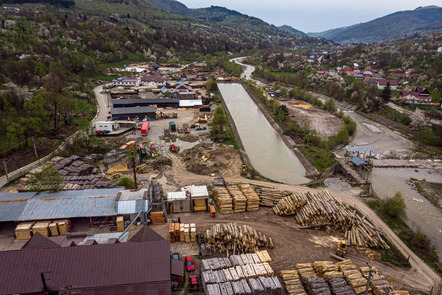
Logging area
The timber that is logged in the entire region is collected in this valley: Vallei Doftanei. Here the logs are sorted, roughly processed and then shipped to the rest of Europe. Romania is home to one of the last remaining primeval forest in Europe. In the mountains, usually illegal clear-cutting is commonplace,reducing the bears' natural habitat.
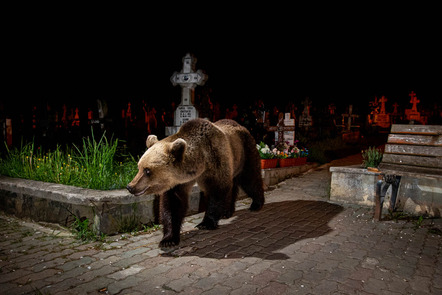
Grave situation
The increasing number of bears entering residential areas leads to such surreal images as this one, which shows a bear crossing a cemetery on itsway from its home in the forest to forage in the town. There is much debate about the proper management of Romania's bear population, especially as attacks on humans have become more frequent in recent years.
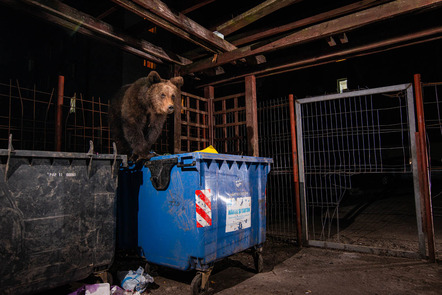
Junk food
In a small town in the Carpathian Mountains, a furry visitor rummages through an overflowing dustbin in the hope of finding something edible. Bears are creatures of habit and visit the bins in a specific order every night.
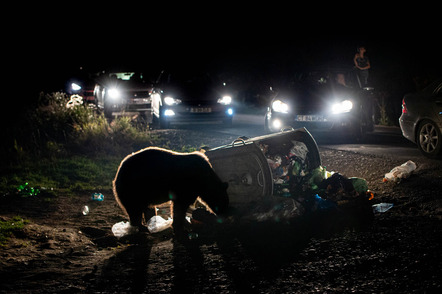
Questionable spectacle
About an hour away from Brasov is a valleythat is visited by bearssearching for food scraps in specifically placed containers, which are put there by the locals. People then gather to enjoy the "spectacle". The night this picture was taken, dozens of people were drinking, shouting and lighting firecrackers while waiting for the bears to arrive at dusk.


